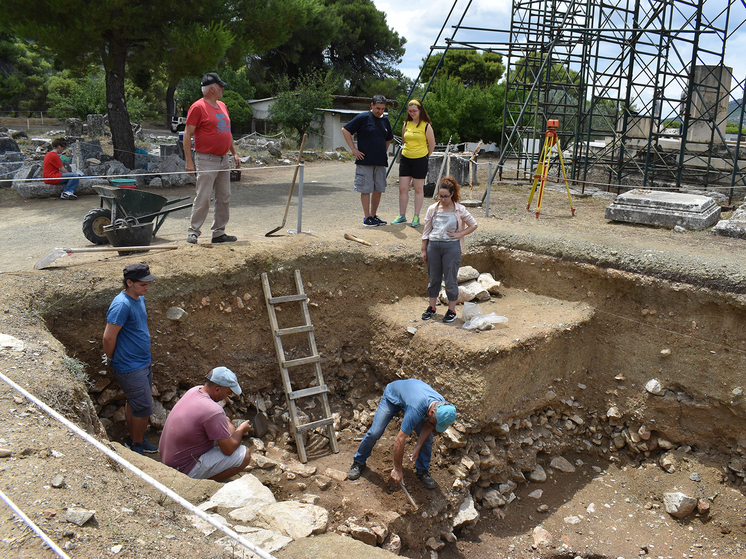Huge remains found in central Nuremberg
Archaeologists say they have discovered what may be the largest mass grave ever excavated in Europe at a site in southern Germany. According to the press release, approximately 1,000 skeletons of plague victims have so far been found in mass graves in the city center of Nuremberg. At the same time, according to experts, there may be a total of more than 1,500 people in the grave

The remains were discovered during archaeological surveys ahead of the construction of new residential buildings in Nuremberg, CNN reports.
Melanie Langbein of Nuremberg's cultural heritage department told CNN that eight plague pits were discovered, each containing several hundred tel.
“These people were not buried in a regular cemetery, although we designated plague cemeteries in Nuremberg,”, notes Langbein.
“This means a large number of dead people who had to be buried in a short time without taking into account Christian burial practices,” she said.
Because of this, Langbein said, mass graves are “more than likely.” ; due to an epidemic such as the plague.
Beginning in the 14th century, she said, there were outbreaks of plague in Nuremberg about every 10 years, making it difficult to date the remains.
Archaeologists used radiocarbon dating to date one mass grave to between the late 1400s and early 1600s, and found shards of pottery and coins at the site dating to later than the end of that period.
Scientists also discovered a 1634 note detailing a plague outbreak that killed more than 15,000 people in 1632-1633, saying nearly 2,000 were buried near St. Sebastian's Spital, the site of the current excavation, Langbein says.
This evidence led the team to conclude that the older group of remains likely dates from the epidemic of 1632-1633.
Julian Decker, whose company Terra Veritas is conducting the excavation, told CNN he was surprised by the find.
“There was no reason to assume that there were burials in the field,”, he said, adding that When the first remains were discovered, he thought they might have been the result of bombing during World War II.
Decker now believes there may be more than 1,500 bodies at the site.
«I personally expect the number to reach 2,000 or even higher, which would make this the largest mass grave site in Europe,» he said.
Langbein tells CNN that the 1632-1633 epidemic was worse than those before, due to the consequences of the Thirty Years' War, a series of conflicts that involved various European countries from 1618 to 1648.
“Nuremberg was surrounded by various armies, and the population lived in fairly difficult conditions,” she said.
According to the researchers, the graves contain a representative sample of the society of the time, allowing them to study the characteristics of the population.
”We can statistically examine the size and demographics of a city using the same tools as a modern team of census takers «conducting a recent census,» Decker said, including percentages of children and adults, women and men, and overall health.
“Technically, we could figure out what percentage were left-handed,” .
The next step is to complete the excavation and clean and analyze the bone material, Langbein told CNN. She added that there would also be collaboration with institutions interested in certain aspects of the findings, including the analysis of the plague genome and the study of parasite eggs in the soil.
“We are also planning an exhibition, but this will take some time, so Fall 2025 is the earliest we can be ready,” says Langbein.


